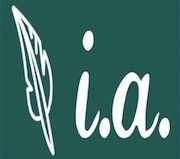many decades. This intrigue lies in the mysteries that lurk in these myths.
These mysteries include the lack of archeological finds prior to the Viking
Age, (late 700s A.D. to 1100), the absence of authentic celebratory rituals
paying homage to the Norse gods and goddesses, and an absence of a thorough
explanation of the meaning of the names of the Norse gods and goddesses.
This book sheds light on these mysterious elements, especially the meaning
hiding beneath the names and places in Nordic myth. This commentary is a
lexicon focused on etymology and semantics designed to allow the reader to
gain insight into these myths. Definitions linked to names of gods and
goddesses and words found in the Norse myths become a lexicon referring to
the vocabulary of a particular people, a language, and a branch of
knowledge, that have application both in the present and the ancient past. I
let the words journey me across the boundaries of time, culture, and
academia. Follow the common threads of various languages related to similar
words to discover the essential meanings. The written versions of Nordic
myths and sagas from the oral tradition occurred in the 13th century by a
small number of people. It seems to me that there is a margin of error in
misinterpretation of sounds and images of these oral traditions when
committed to written documents. This margin of error is part of the intrigue
and mystery. The Norse myths may have been 100s, if not 1,000s of years old
when Snorri Sturluson committed them to paper in the early 13th century.
About the Author
Lois Liggett is a retired physical therapist. She has traveled throughout
the world. She worked in Japan in 1990 as a geriatric rehabilitation
consultant for several retirement communities. She has an M.A. in
gerontology from Hood College and a B.S. in physical therapy from Russell
Sage College. She has an avid interest in the interface of language with
mythology, religion, and spirituality.

